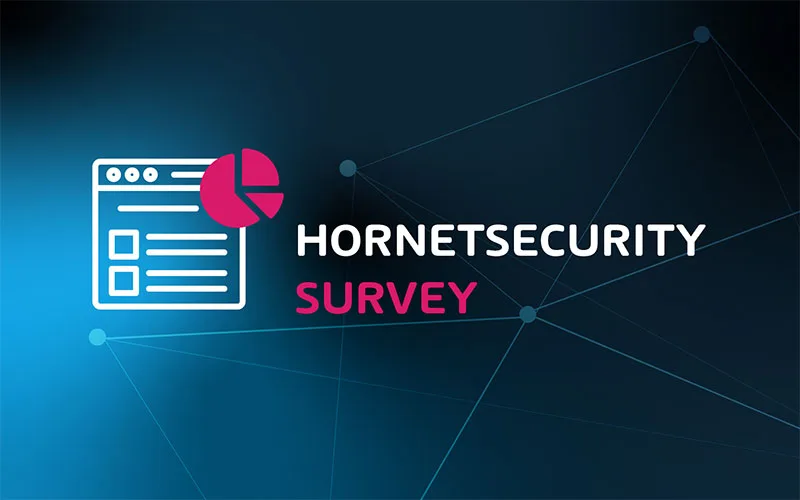

Hornetsecurity Hybrid Cloud Adoption Survey
Hybrid Cloud: 2 in 3 IT Pros state it’s their Future
About the hybrid cloud adoption survey
Migration to cloud technologies has always seemed like an inevitable, yet somewhat far off event. The events of the past two years, however, have accelerated the adoption rate of cloud technology, thanks to the increasing need for remote solutions for businesses and individuals. The road to the cloud has proven to be a bumpy one, with plenty of technical and human challenges that need to be addressed before any company can claim to be completely cloud-native, or even to adopt a hybrid cloud model.
Security, data storage, application compatibility, industry regulations, legacy software – there are a near endless amount of variables that can have an impact on any company’s journey to the cloud. We have lots of content already available in the DOJO on most of these subjects, but we wanted to find out exactly which of those challenges have been the most prevalent in hybrid cloud environments, along with what IT professionals think the future holds for infrastructure. After all, it can be difficult to know exactly when is the right time to transition to cloud technology.
For this reason, we ran a hybrid cloud adoption survey with over 900 IT professionals across the world, and now, we’re ready to share our findings with you. Throughout the rest of this article, you’ll find a detailed breakdown of our findings, but if you’d like more detailed data, you can also take a look at the hybrid cloud survey results.
With that out of the way, let’s get started.
About the hybrid cloud survey respondents
Before we dive into the results themselves, here’s a breakdown of who our respondents are, for extra context.
Just over half (50.4%) of respondents form part of an internal IT department, while 23.6% are part of an MSP. The rest are split between other roles and business owners who handle their own IT. Most respondents have job duties primarily surrounding system administration or engineering (80.4%), while the rest are responsible for Team Management (19.6%).
We also asked our respondents about how many years of experience they have in the IT industry. Nearly half (45.8%) reported over 20 years of experience in the field. The rest are split between 16-20 years (17.9%), 10-15 years (18.1%), 6-10 years (11.1%) and 1-5 years (7.1%).
In terms of geography, the vast majority of respondents are based in North America (43.8%) and Europe (41.6%). The remaining 14% are split between Asian territories (4.7%), Africa (3.3%), Australia (2.9%), the Middle East (2.1%) and South America (1.7%).
The size of the businesses (by employee count) that our respondents form part of varied between 1-50 (41.7%), 51-200 (23.1%), 201-500 (12.1%), 501-1000 (6.7%), and 1,000+ (16.3%).
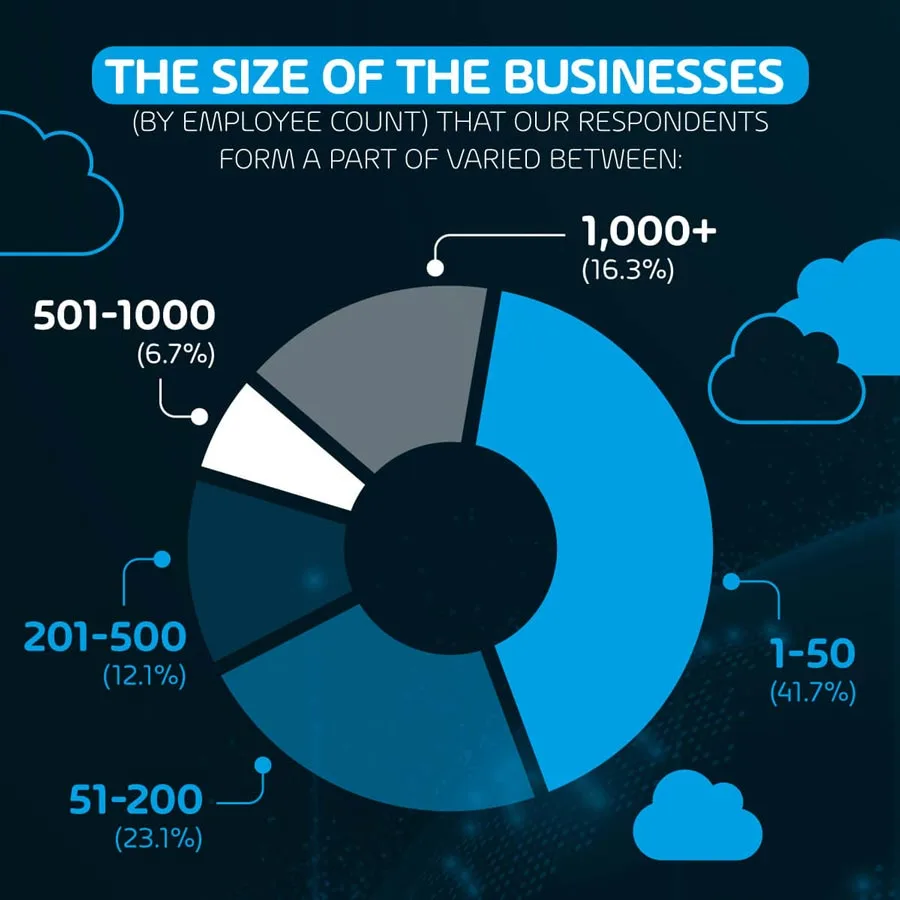
2 in 3 IT professionals see hybrid cloud solutions as a permanent destination for infrastructure
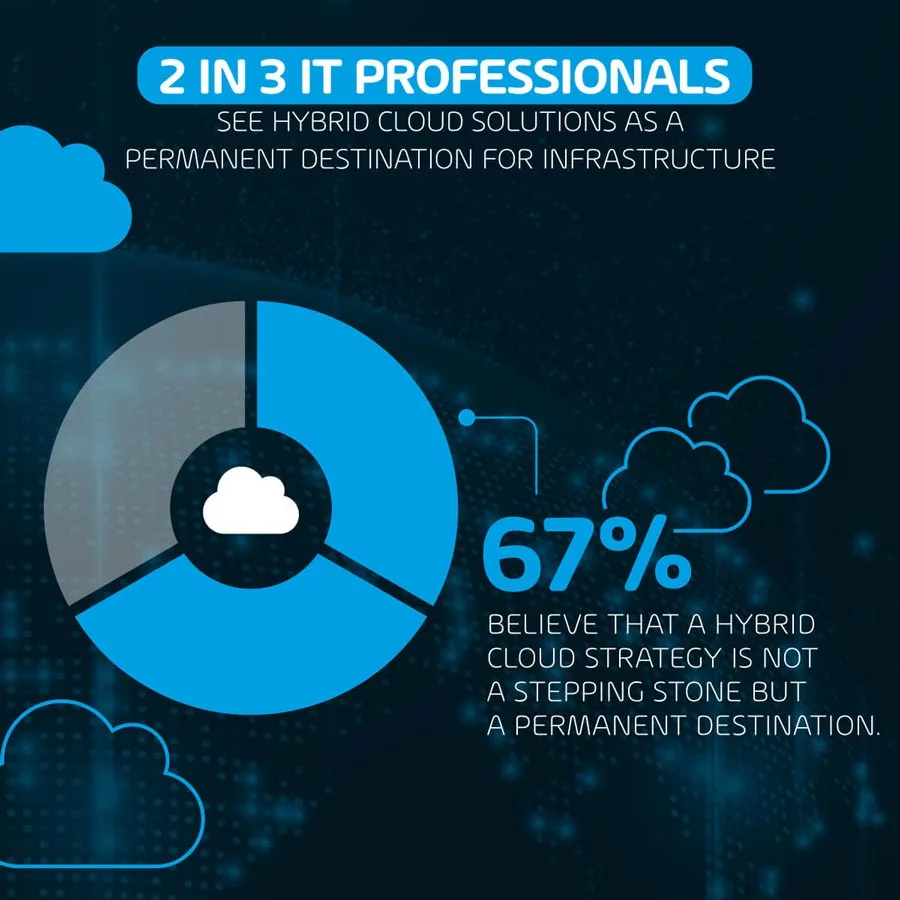
One of the most interesting findings the hybrid cloud survey provided is that while industry sentiment is that cloud infrastructure is the future, 67% of our respondents believe that a hybrid cloud strategy is not a stepping stone to cloud-native infrastructure, but rather, a permanent destination. This is due to specific workloads that will remain on-premise for any number of reasons, which will be explored later.
28.6% of respondents reported that they’ll remain with a hybrid cloud model, only until full cloud adoption becomes available to their workloads. We expect this percentage to grow over the coming years as more commonly found issues related to cloud adoption are solved, such as application compatibility thanks to the advancements in containerisation tech.
The remaining 4.3% of survey respondents said they’ll be remaining 100% on-premise for the foreseeable future, rejecting even a hybrid cloud strategy. When asked for the reasons they’re keeping a fully on-premise infrastructure, these respondents cited the need for full control over their data, security issues, and cost considerations related to cloud services.
1 in 3 companies cite trust issues with cloud as reason for some workloads remaining on-premise
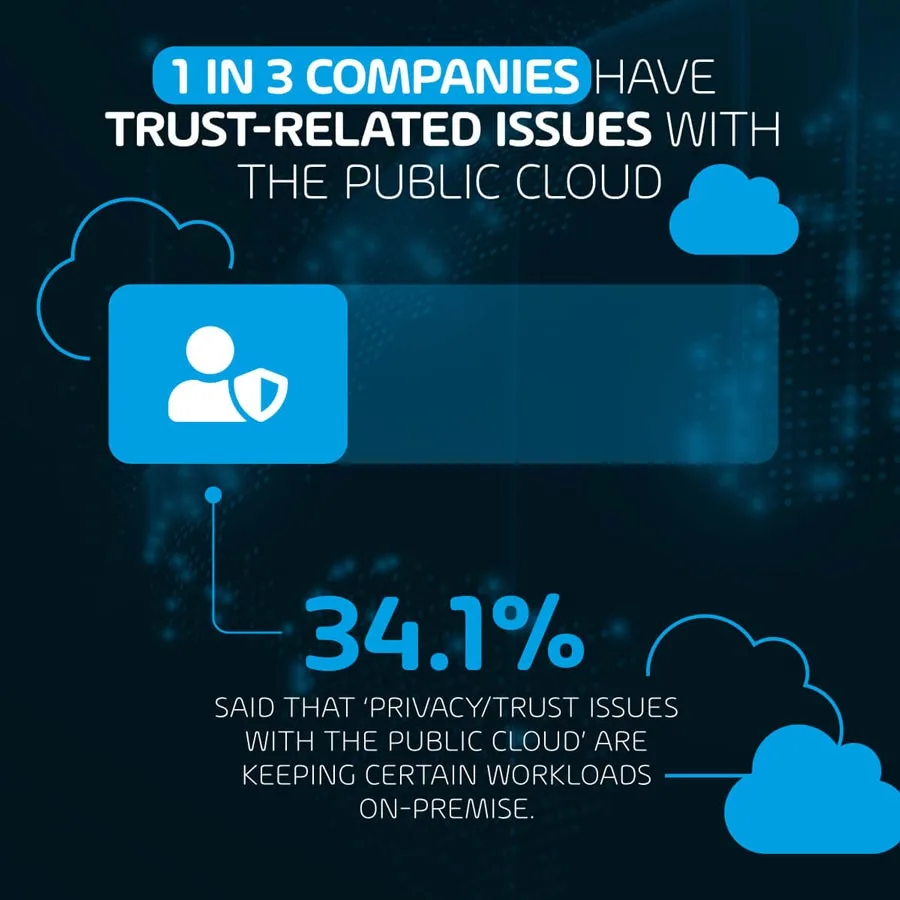
34.1% of all our respondents said that ‘Privacy/Trust issues with the public cloud’ are keeping certain workloads on-premise. This sentiment is prevalent across all our respondents, and there is no appreciable difference in trust in the public cloud between those respondents from different territories or company sizes – very clearly indicating that it is a widely-held distrust.
There is, however, a difference in the level of trust in the public cloud between those respondents with more experience and their less seasoned counterparts. Respondents with over 20 years of experience were more likely to express distrust in cloud platforms (33.6%) than those with 1-5 years of experience (24.2%). This indicates that with experience comes more cynicism when it comes to allowing cloud platforms access to company data and operation.
Security and monitoring is one of the chief concerns that many of our respondents had throughout the survey. In fact, when asked about which technical challenges they see in a hybrid cloud model, half (49.3%) of all respondents cited ‘monitoring and security’. This is not only a concern from a cloud platform perspective, but also from a user perspective. 73.1% of all respondents mentioned that they are either using, or planning to use, multi-factor authentication and conditional access as part of their suite of security tools.
There is a clear overall sentiment that as more workloads are shifted into the cloud, the more of a concern control, monitoring and security become, especially when compared with the apparent peace of mind that on-premise infrastructure is associated with.
Only 5.7% of respondents report no technical difficulties with cloud or hybrid technologies
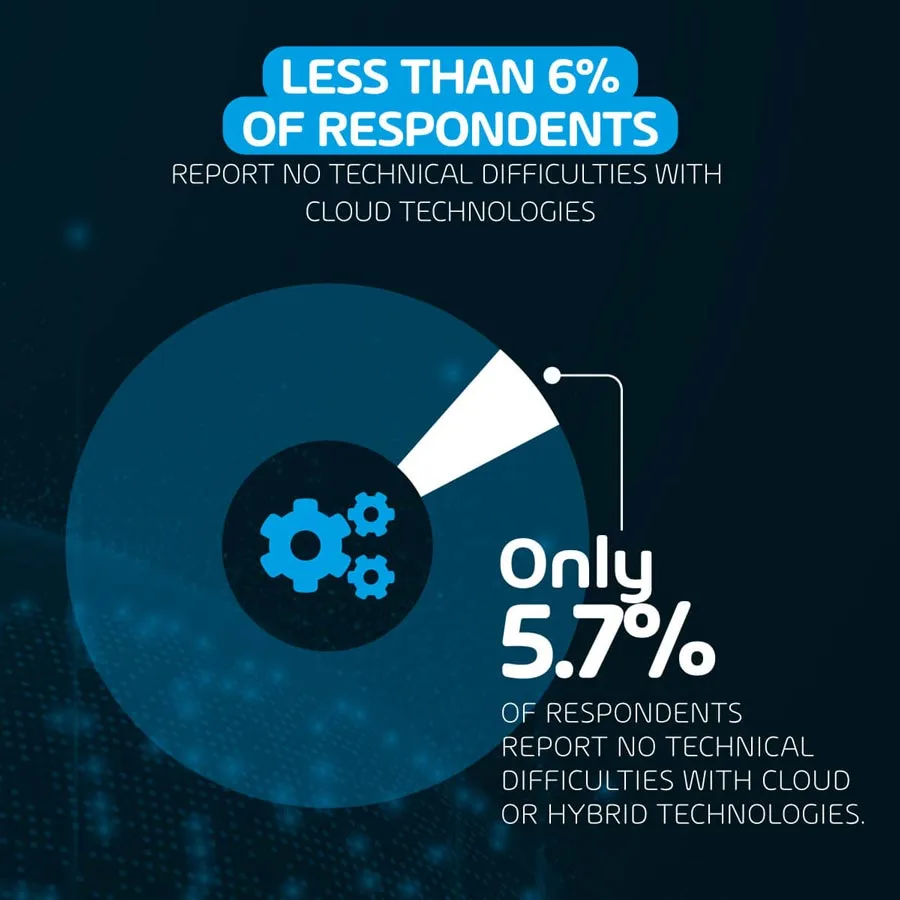
Among the reasons that our respondents cited behind having to keep certain workloads on premise, there were two that were more frequently mentioned than trust issues with the cloud. These were ‘legacy systems or software’ and ‘application compatibility’, each being reported by 51.8% and 39.5% of respondents respectively.
This would indicate that even though Microsoft and other cloud platform providers have placed significant resources into providing avenues for IT professionals to modernise their applications and assist in the migration to hybrid cloud architecture, this effort hasn’t resulted in the elimination of related issues.
In fact, when asked what technical difficulties respondents have with cloud technologies, the most common answer provided (48.2%) was ‘technical knowhow or certified staff’. Meaning that even though the technology required to overcome issues related to legacy software and application compatibility are available, many businesses lack the required knowledge and skill to implement them.
There is further evidence of this lack of knowledge, as one third (33.3%) of respondents also cited connectivity as a technical difficulty they have with cloud technologies. Indeed, while connectivity is definitely one of the most challenging aspects of the application of cloud platforms, it can be handled with the correct knowledge and certification.
Workloads holding full cloud adoption back
When asked about which specific workloads respondents envisage remaining on-premise, the following data was gathered.
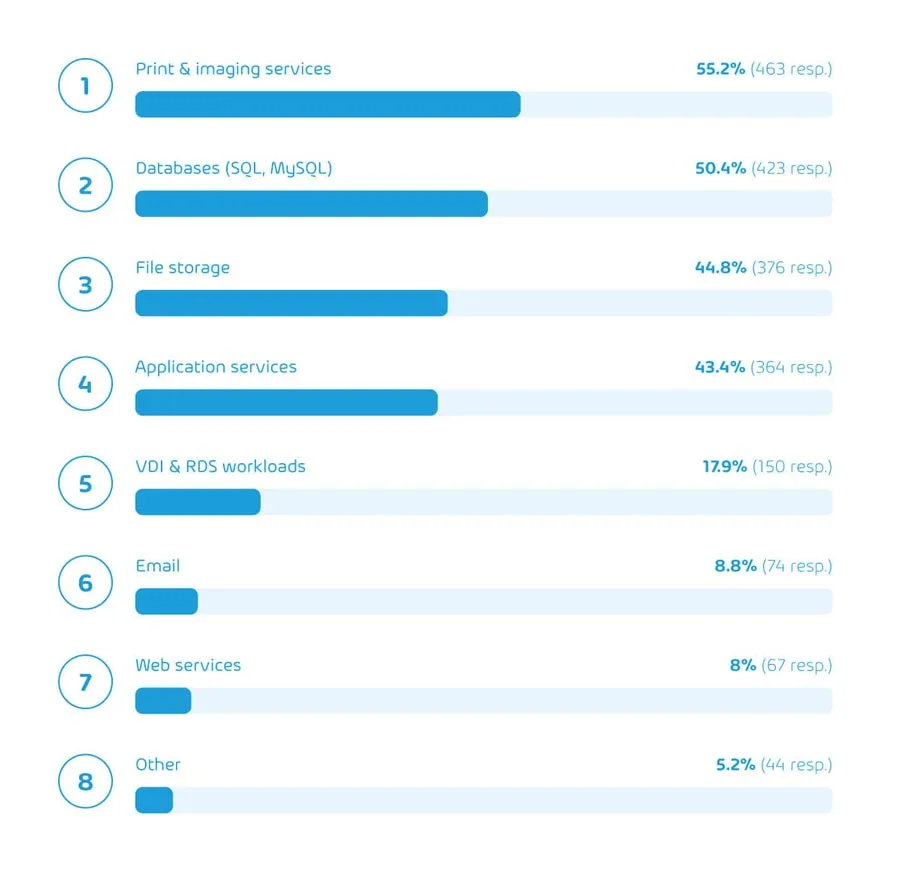
With regards to ‘print & imaging services’ being the most frequently mentioned workload in the list, it’s likely that many internal IT teams adopt an ‘if it ain’t broke, don’t fix it’ approach to this particular issue, especially since remote access for print services is redundant in most cases. Print services are also a critical end-user service for many organisations, so IT departments likely exercise extra caution before attempting an upgrade so as not to interrupt operation.
Databases and File Storage are also high on the list, with a combination of privacy and performance issues being the main reasons such workloads would remain on-premise for many companies. Industry regulations such as GDPR, HIPAA, CMMC, and others may also be playing a part, as 28.7% of respondents cited these as an obstacle for cloud adoption.
Companies using MSP services more likely to use cloud solutions vs on-premise
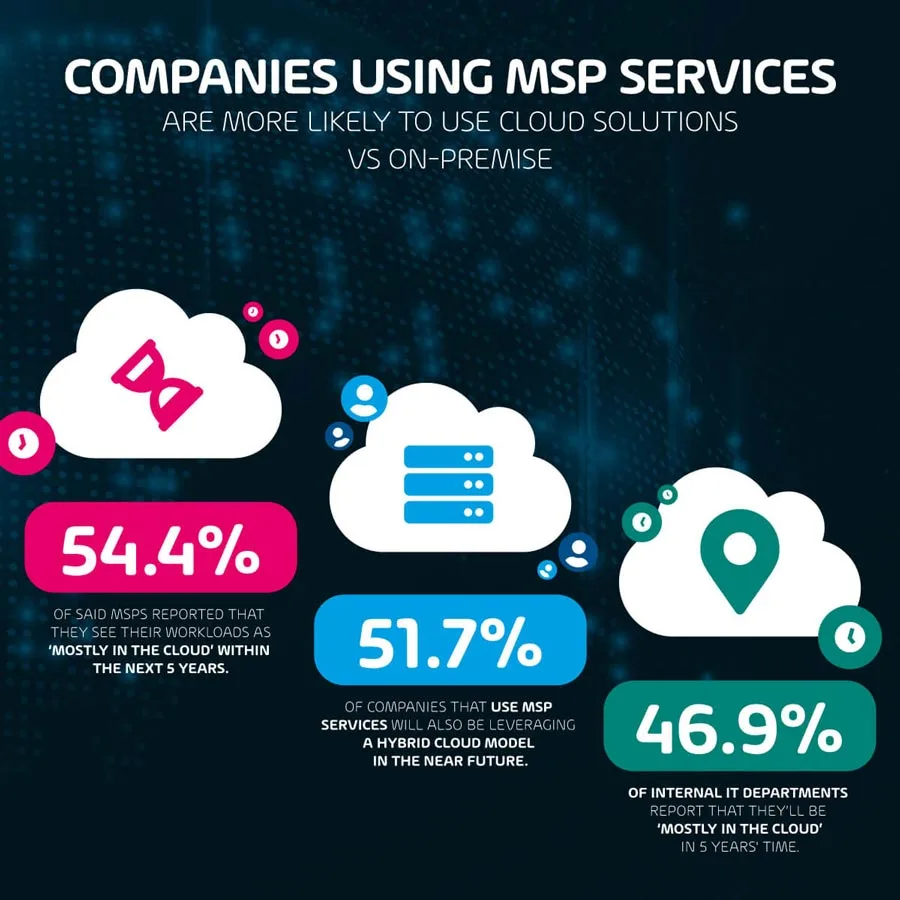
MSPs will be glad to hear that they’re leading the way when it comes to cloud adoption across the industry. 54.4% of MSPs reported that they see their workloads as ‘mostly in the cloud’ within the next 5 years. They also seem to be pulling their clients into hybrid cloud tech with them, as 51.7% of companies that use MSP services will also be leveraging a hybrid cloud model in the near future. 46.9% of internal IT departments, on the other hand, report that they’ll be ‘mostly in the cloud’ in 5 years’ time.
Trust issues with the public cloud, however, remain relatively constant across all respondents, with 34.4% of internal IT teams reporting that trust issues are an obstacle to cloud adoption, versus 32.5% of professionals that engage an MSP.
In more good news for MSPs, our survey also revealed that 40.8% of respondents that do not form part of an MSP, nor use any MSP services, would consider engaging a Managed Services Provider to assist with the transition from on-premise to a hybrid cloud architecture.
Most popular containerisation services
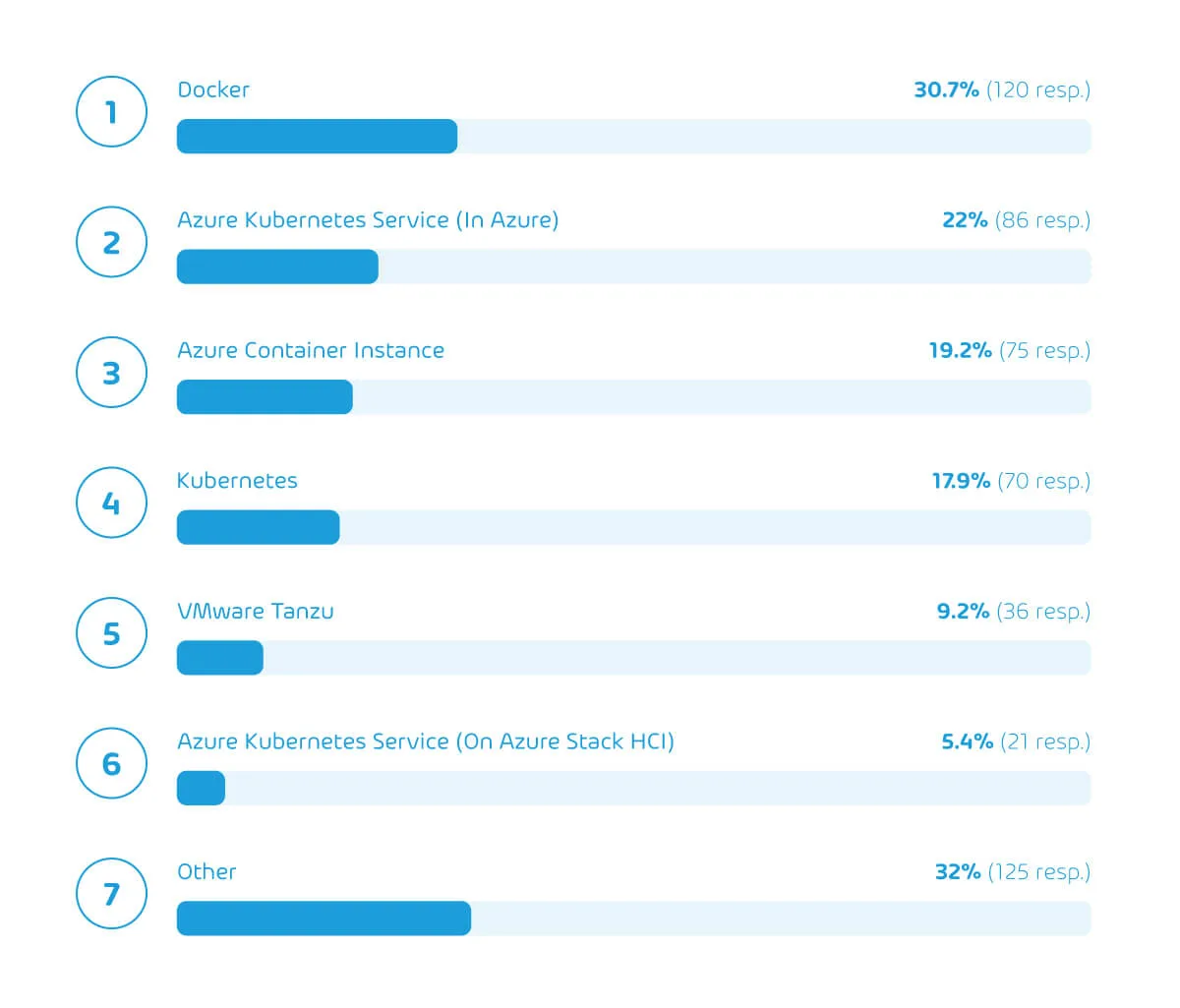
Through the survey, we also wanted to find out which containerisation service holds the most popularity within our base of respondents, since this is one of the key technologies that make a hybrid cloud strategy possible for certain use cases.
We were relatively surprised to find that Docker remains popular among all containerisation tech, with 3 in 10 (30.7%) respondents citing that it’s the technology they either currently use or plan on using within the next 5 years. This stands against 22% of respondents that use Azure Kubernetes Service.
This is especially surprising since Kubernetes with ContainerD is proving to be a more powerful, albeit more complex, containerisation solution. We actually dove into the intricacies of AKS (Azure Kubernetes Service) with Ben Armstrong from Microsoft in an episode of the SysAdmin DOJO Podcast, which you should definitely check out if you’re looking to up your containerisation game.
Full hybrid cloud adoption survey results
If you’d like to take a look at the data for yourself, feel free to take a look at the hybrid cloud adoption survey results here.
Next steps?
The findings will directly influence the Altaro webinar on 23 March, How Azure Stack HCI is Forcing Changes in your Datacenter. Microsoft MVPs Andy Syrewicze and Carsten Rachfahl will break down Microsoft’s core hybrid cloud solution Azure Stack HCI, what it means for IT Pros and how it will fit into the tech stack long-term. Register for this hybrid cloud webinar >
FAQ
Hybrid cloud is a term used to describe an IT system architecture that utilises a combination of on-premise technology and cloud (public or private) services. A hybrid cloud model allows these systems to interact with each other and share data and resources to support the operation of an IT infrastructure.
Hybrid cloud models are used in a wide variety of situations. The most common of which is when a business wants to modernise their IT infrastructure, but has certain workloads that must remain in physical data centres due to legacy software or industry requirements.
The first step is to become familiar with the providers of hybrid cloud platforms, such as Microsoft Azure, Amazon Web Services, Google Cloud, etc. Each of these providers has their strengths and weaknesses, so finding out what your IT infrastructure requires the most is essential in choosing the right platform. A benefit of cloud technologies is that it doesn’t require hardware installations for trial, so testing different providers to find out which fits your business best is definitely recommended.
Benefits of hybrid cloud technology include:
Flexibility and scalability. Since they don’t rely on fixed hardware resources, systems operating in hybrid cloud environments can increase and decrease resource allocation depending on the current workload.
Cost management. With the amount of different available options and price points for both private and public cloud technology, businesses can pick and choose which applications will be run on which platform based on their needs and budgets.
Security and monitoring. Native and third party security suites and monitoring software is widely available for most major cloud platforms that make them a preferable choice for businesses that need the accessibility of cloud services for sensitive data.
Control and customisation. With the vast amount of integration options available for cloud platforms, IT can take the shape of whatever specific infrastructure is required by the business.
Reliability and resiliency. Thanks to the decentralised nature of several cloud services, downtime is exceptionally rare, and data loss due to hardware failures is practically non-existent. Recovering any lost data is also a pain-free process in the majority of cases.
Frequently changing workloads for applications that require the scalability of cloud technology, and the security of on-premise or private cloud storage.
High levels of data processing – processing large amounts of data usually occurs in waves. Hybrid cloud platforms allow external resources to be allocated at a lower cost than other solutions.
Migrating to cloud technology – Thanks to its flexibility, many businesses are using a hybrid cloud approach until all their workloads can be completely shifted into the cloud due to financial or technological constraints.
Future-proofing – no business knows exactly what it will require down the road, and a hybrid cloud approach allows businesses to be agile and reactive with their IT resources in ways that were previously impossible.

